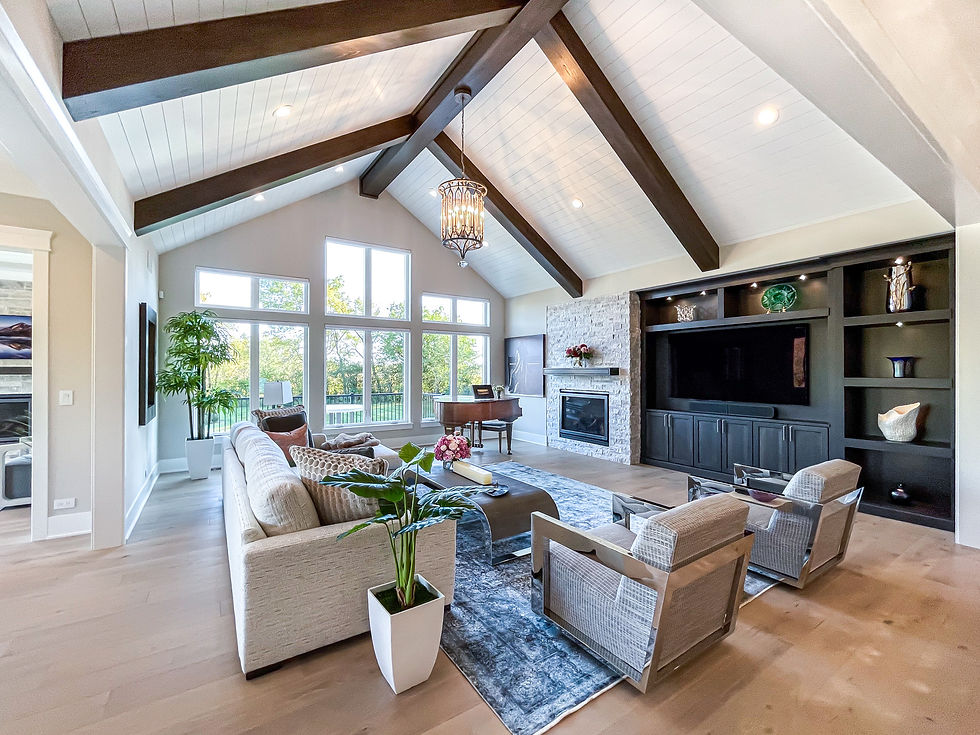Pros and Cons of Concrete Patios for Your Backyard Outdoor Space
- Home Channel TV
- Jun 13
- 3 min read

A concrete patio can be a fantastic addition to your backyard, offering a versatile and functional outdoor space for relaxing, entertaining, or dining. However, like any home improvement project, it comes with its advantages and drawbacks. In this blog, we’ll explore the pros and cons of concrete patios to help you decide if it’s the right choice for your outdoor living area.
Pros of Concrete Patios
Durability and Longevity
Concrete is incredibly strong and can withstand heavy foot traffic, harsh weather conditions, and the test of time. With proper installation and maintenance, a concrete patio can last for decades, making it a cost-effective option in the long run.

Stamped Concrete Patio Low Maintenance
Unlike wood decks or natural stone patios, concrete requires minimal upkeep. Regular sweeping and occasional power washing can keep it looking fresh. Sealing the concrete every few years can further protect it from stains and weather damage.
Versatility in Design
Concrete is highly customizable. You can choose from various finishes, such as stamped, stained, or polished concrete, to mimic the look of natural stone, brick, or tile. You can also add color or patterns to match your backyard’s aesthetic, giving you endless design possibilities.

Cost-Effective
Compared to materials like pavers, natural stone, or composite decking, concrete is generally more affordable. The initial installation cost is lower, and its durability reduces the need for frequent repairs or replacements.

Weather Resistance
Concrete holds up well against rain, snow, and UV exposure, especially when sealed. It doesn’t rot, warp, or fade like wood, making it ideal for regions with extreme weather conditions.
Eco-Friendly Options
Concrete can be made with recycled materials, and its light color reflects heat, reducing the urban heat island effect. Additionally, permeable concrete options allow water to seep through, minimizing runoff and supporting sustainable landscaping.
Cons of Concrete Patios
Prone to Cracking
While concrete is durable, it can develop cracks over time due to freeze-thaw cycles, soil movement, or heavy loads. Proper installation with reinforcement (like rebar or wire mesh) and expansion joints can minimize this risk, but cracks may still occur.
Limited Aesthetic Appeal Without Customization
Plain concrete can look utilitarian and uninspiring compared to natural stone or wood. To achieve a more attractive look, you’ll need to invest in stamping, staining, or other decorative finishes, which can increase the overall cost.
Slippery When Wet
Smooth concrete surfaces can become slippery when wet, posing a safety hazard, especially for households with children or elderly members. Textured finishes or non-slip sealants can help, but they add to the maintenance or installation process.
Difficult to Repair or Replace
If a section of your concrete patio gets damaged or stained, repairs can be tricky. Patching may not blend seamlessly with the original surface, and replacing an entire slab can be costly and labor-intensive.
Heat Retention
Concrete absorbs and retains heat, which can make the patio uncomfortably hot during summer months, especially in sunny climates. Choosing a lighter-colored finish or adding shade structures can mitigate this issue.
Installation Challenges
Pouring and curing concrete is a labor-intensive process that requires skilled professionals to ensure a level, crack-resistant surface. Poor installation can lead to issues like uneven surfaces or premature cracking, adding to repair costs.

Final Thoughts
A concrete patio is a practical and versatile choice for enhancing your backyard outdoor space, offering durability, low maintenance, and plenty of design options. However, potential drawbacks like cracking, heat retention, and a less natural aesthetic should be weighed carefully. To make the most of a concrete patio, consider your budget, climate, and design preferences, and work with a reputable contractor to ensure proper installation.
If you’re looking for a long-lasting, budget-friendly option with room for customization, a concrete patio might be the perfect fit. On the other hand, if you prioritize a natural look or live in an area with extreme weather, you may want to explore alternatives like pavers or wood decking.
Ultimately, the right choice depends on your lifestyle and how you plan to use your outdoor space.
What’s your take on concrete patios? Share your thoughts or experiences in the comments below, and let us know how you’ve transformed your backyard!





Comments